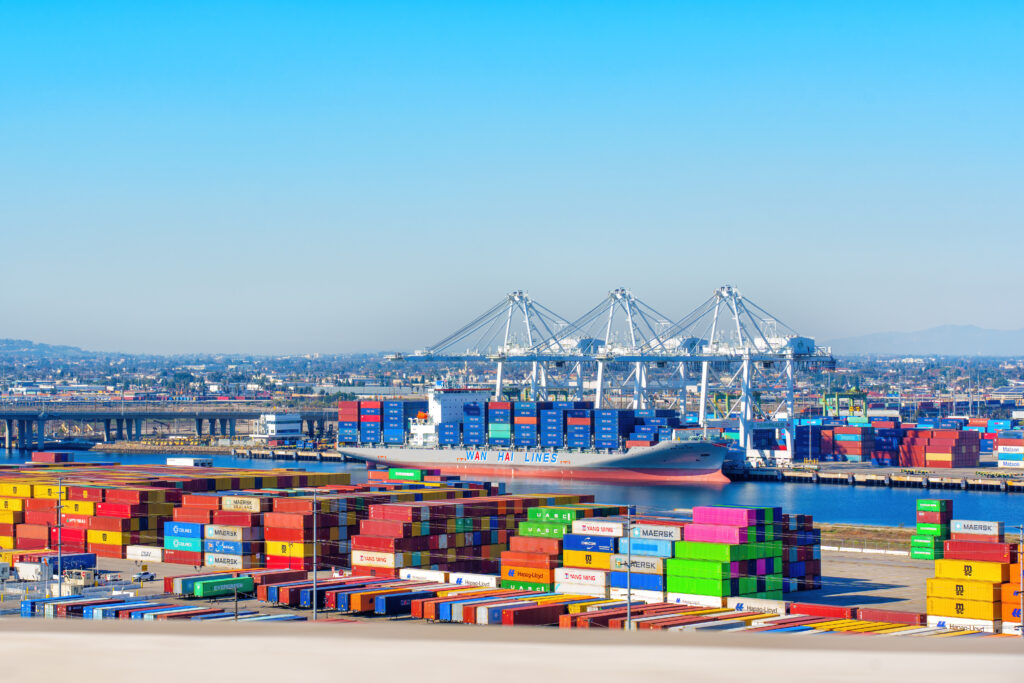Nearshore News: 150 Tariff Letters Coming, Canada Blocks Chinese Steel and Apple Localizes Supply

As the U.S. barrels toward its August 1 tariff deadline, the global trade map continues to shift. The White House is preparing to issue a single tariff rate for over 150 smaller nations, streamlining negotiations but raising uncertainty for many. Meanwhile, ripple effects are already spreading: Canada is blocking redirected Chinese steel, Apple is racing to secure non-Chinese rare earths, and U.S. ports are seeing record-breaking activity as importers rush to beat the clock. From geopolitical positioning to supply chain strategy, the pressure is on.
Nearshore News Summary:
- President Trump plans to notify 150+ smaller trading nations of a single tariff rate. All countries are currently subject to a 10% baseline tariff, which may rise to 15–20%, though no new rate was confirmed. (Politico)
- In response to U.S. tariffs on Chinese steel, Canada has announced new restrictions to prevent its market from being flooded with diverted shipments. (NYT)
- Apple has signed a $500 million deal with MP Materials to secure a non-Chinese supply of rare earth magnets critical for its devices. (The Guardian)
- Port of LA just had its best June on record as importers rushed to beat tariff deadlines. (CNN)
Trump says he will set tariffs for 150 small countries in one swoop
Published: July 16, 2025
Source: Politico
President Trump announced that over 150 smaller trading nations will soon receive a single, standardized tariff letter. While larger countries have negotiated individual terms, Trump emphasized uniform treatment for less significant trading partners. The plan is part of a broader push to reset global tariffs by August 1, though doubts persist about the timing.
Key points:
- Uniform Tariffs for Small Nations: Trump plans to notify 150+ smaller countries of a single tariff rate, treating them as a group due to their limited trade volume with the U.S.
- Current Baseline and Potential Increase: All countries are currently subject to a 10% baseline tariff, which may rise to 15–20%, though no new rate was confirmed.
- Individual Negotiations Ongoing: Larger economies have received separate letters and are negotiating their own terms before the August 1 deadline.
- Implementation Doubts: Some officials question whether the new tariffs will take effect August 1, due to concerns about economic impact and political backlash.
Canada Moves to Block Chinese Steel Now Shut Out of the U.S.
Published: July 16, 2025
Source: NYT
In response to U.S. tariffs on Chinese steel, Canada has announced new restrictions to prevent its market from being flooded with diverted shipments. Prime Minister Mark Carney revealed a tougher safeguard mechanism that imposes 50% tariffs on steel from countries without a free trade agreement with Canada, including China, once shipments exceed 50% of their 2024 levels.
Key points:
- Steel Diversion Concerns: Canada fears that Chinese steel, shut out of the U.S. by Trump’s 50% tariff, will be redirected to its market and harm domestic producers.
- New Tariff Thresholds: Countries without Canadian free trade deals will now face 50% tariffs if their steel shipments exceed half of their 2024 volume; free trade partners will be capped at 2024 levels.
- Broader Trade Tensions: Canada already placed a 50% tariff on U.S. steel and is also facing a potential 35% U.S. tariff on other exports like dairy, copper, and pharmaceuticals starting August 1.
- No Progress in U.S. Talks: Carney admitted little chance of negotiating away Trump’s tariffs and declined to state what level of tariffs Canada might accept.
- Closer Ties with Mexico: As U.S.-Canada relations worsen, Carney and Mexican President Claudia Sheinbaum are planning further trade cooperation, including an upcoming meeting in Mexico.
Apple inks $500m deal for rare earth magnets with US mining firm
Published: July 16, 2025
Source: The Guardian
Apple has signed a $500 million deal with MP Materials to secure a non-Chinese supply of rare earth magnets critical for its devices, following China’s export restrictions earlier this year. The deal marks a strategic move by Apple to safeguard its supply chain and align with U.S. efforts to bolster domestic production amid ongoing trade tensions with China.
Key points:
- Strategic Shift Post-Tariffs: The deal follows China’s April restrictions on rare earth exports, imposed in response to Trump’s tariffs. Apple is moving to reduce reliance on Chinese supply chains.
- MP Materials as U.S. Supplier: MP Materials operates the only rare earths mine in the U.S. and recently signed a multibillion-dollar agreement with the Department of Defense, positioning itself as a central domestic source.
- Recycled Magnet Production: Apple will receive magnets made from recycled rare earths, supporting its long-term goal to reduce dependence on mining. Production will take place at MP’s Texas facility, with recycling done in California.
- Massive Scale of Supply: While volumes are undisclosed, MP stated the magnets will go into “hundreds of millions” of Apple devices, indicating integration across major product lines.
- Political and Economic Alignment: The move helps Apple mitigate geopolitical risk, respond to domestic pressure to localize manufacturing, and maintain a positive image in Washington amid broader trade frictions.
Port of LA just had its best June on record as importers rushed to beat tariff deadlines
Published: July 14, 2025
Source: CNN
Importers rushed to bring goods into the U.S. ahead of Trump’s new tariffs, driving the Port of Los Angeles to its busiest June on record. Experts expect volume to drop after August 1, when the current pause on reciprocal tariffs expires.
Key points:
- Record Volume Linked to Tariff Rush: The Port of Los Angeles reported an 8% year-over-year cargo increase in June and a 32% jump from May.
- Paused Tariffs Temporarily Boost Imports: Import volume plummeted after April’s baseline tariffs but rebounded in late June after a temporary pause; the trend is expected to continue into July with an added seven vessels scheduled.
- Retailers Brace for Holiday Uncertainty: With limited time left to place holiday orders, many retailers are frontloading inventory; experts predict a steep decline in imports starting in August as planning becomes riskier.
- New Tariff Rates Will Impact Consumers: Tariffs as high as 50% on imports from countries like Brazil and 30–35% on Canada, Mexico, and the EU are expected to drive up consumer prices by late summer, especially for seasonal goods.
- Small Businesses Hit Hardest: The National Retail Federation warns that smaller retailers lack the financial flexibility to absorb new tariff costs, creating planning challenges and possible shortages on store shelves.
More blogs


